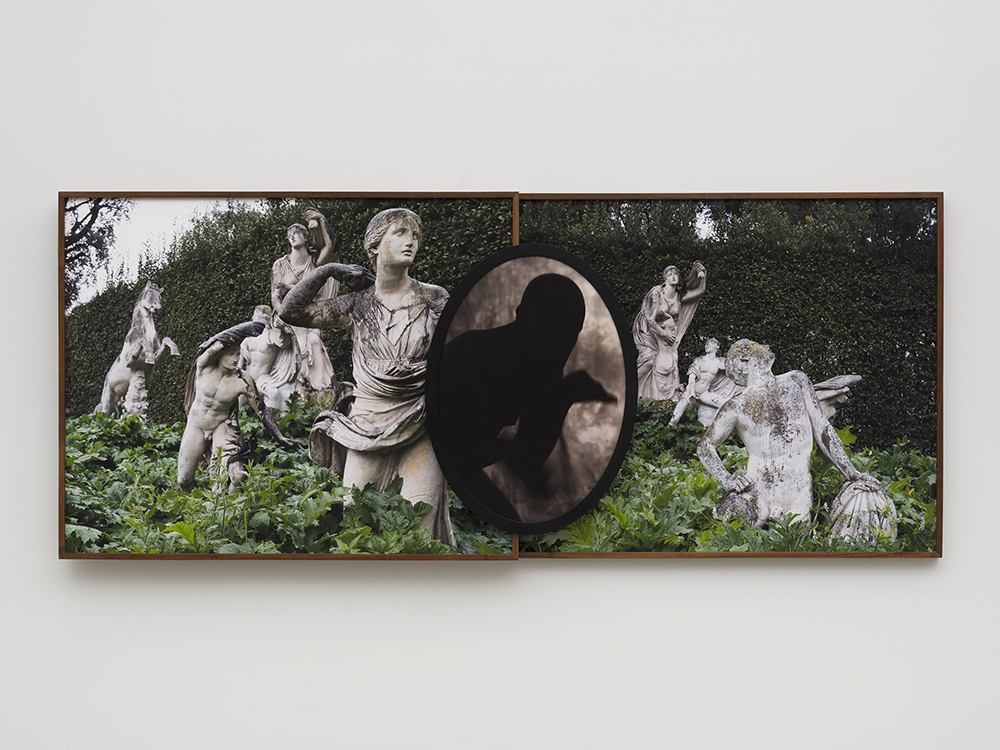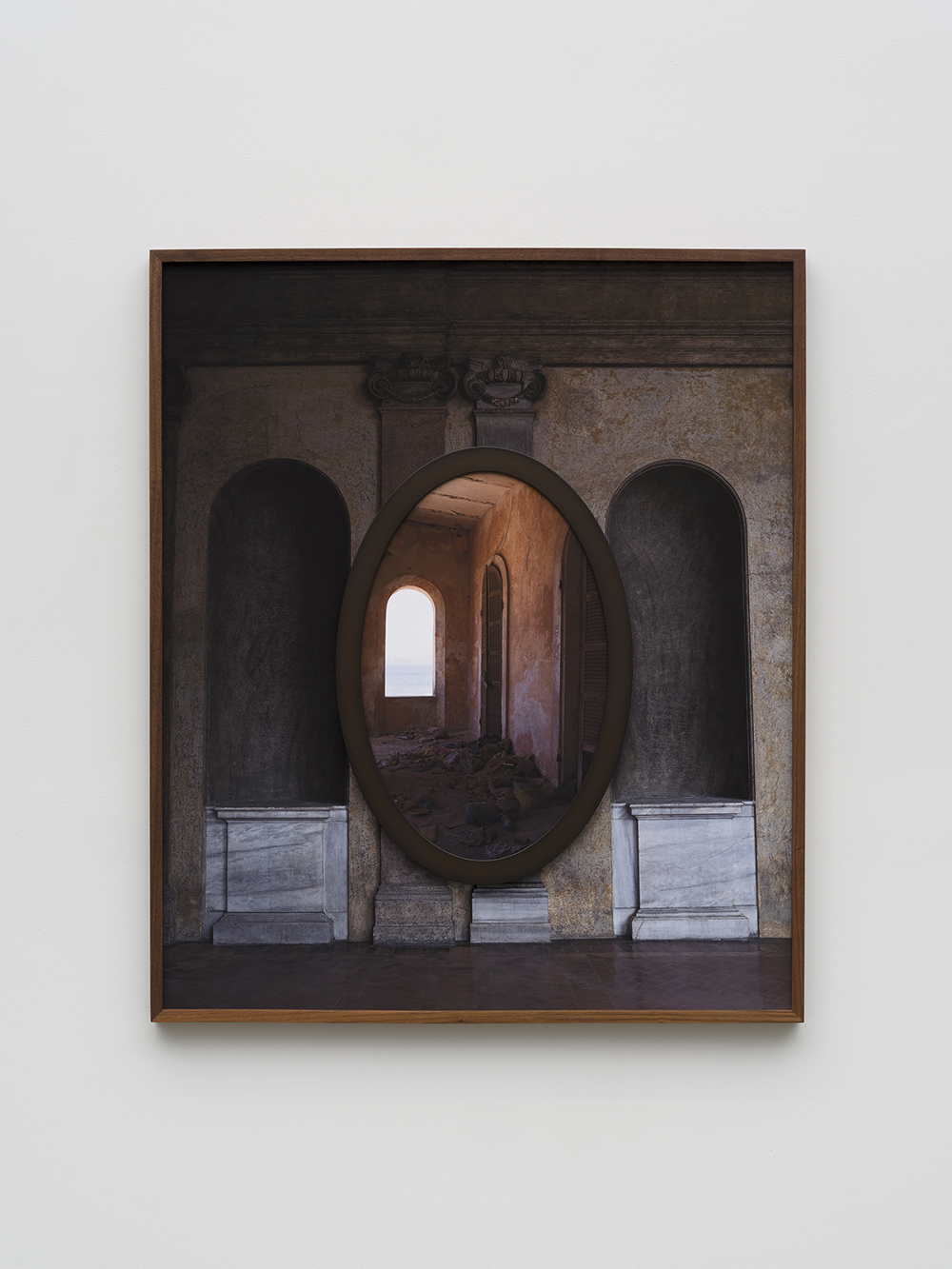Photographer Todd Gray is a rule breaker. In this brave new art world he has fashioned for us, gone are the two-dimensional, singular perspective, rectangular photographs that hung on the walls these past 200 years. In their place, Gray presents something entirely new. Much more than a signature style, his low-relief photographic collage sculptures offer a visual language that defies expectation. Gray critiques and pushes the boundaries of traditional photography by intentionally obscuring his images; altogether disrupting the way photographs typically function and provoking a sense of disturbance.
“Rome Work” presents works created during Gray’s six-month Rome Prize residency in 2023. Representing an intersection of aesthetic, content and place, this body of work examines histories of power as they relate to the Catholic Church, Africa, economic capital and colonialism. The seductive strength of each base image taken during his fellowship is obstructed by layers of framed archival images from his time spent in Africa, a past life as Michael Jackson’s tour photographer and self-portraits in the studio—layered photographs that contract and expand time and space.
Gorée Sienna | Medici Brown (all works 2023) situates an image of the grand interior of the Villa Medici, bathed in brown tones, beneath a smaller, framed oval image of another villa, dilapidated and filled with trash, on Gorée Island, the largest slave-trading post on the African coast. There is an uncanny similarity in the architectural forms of the marble-based niches of the Villa Medici and the ocean-facing window and doorways in the villa on Gorée–uncanny, until you realize they’re both European buildings; one built to extract capital, and the other to flaunt and retain it.

Todd Gray, Rome Work (Niobe and her Chirren), 2023. Courtesy of the artist and Vielmetter Los Angeles.
In Stairway to Heaven’s Hell (St. Anthony Slave Castle | Santa Maria Basilica), an image of a rundown black staircase leading up to a doorway to a white building with propped open black doors transports us effortlessly through its frame and into the base image of the collage, an oculus hoisted up by exquisitely carved marble cherubs, with heavenly white light beaming down into the lens. The dark truth of the matter here: Enslaved people that were interned by the Portuguese at Fort St. Anthony in Ghana were not climbing a stairway to heaven, but to hell on earth.
Rome Work (San Giovanni in Laterano, Gorée Island, Senegal: Palace of Fontainebleau, Salaga) is the most ambitious work in the show, a floor sculpture made with five framed and layered images. You might not realize there is more to the work if you’re not curious enough to walk around it to see how it’s propped up, but Gray likes to reward those who question. The front-facing trio of images built upon the epic papal basilica of San Giovanni is literally supported by an image of the defunct Salaga Slave Market. Through the A-frame architecture of the exhibition’s eponymous piece, we are made to understand that one institution would literally collapse without the other.


